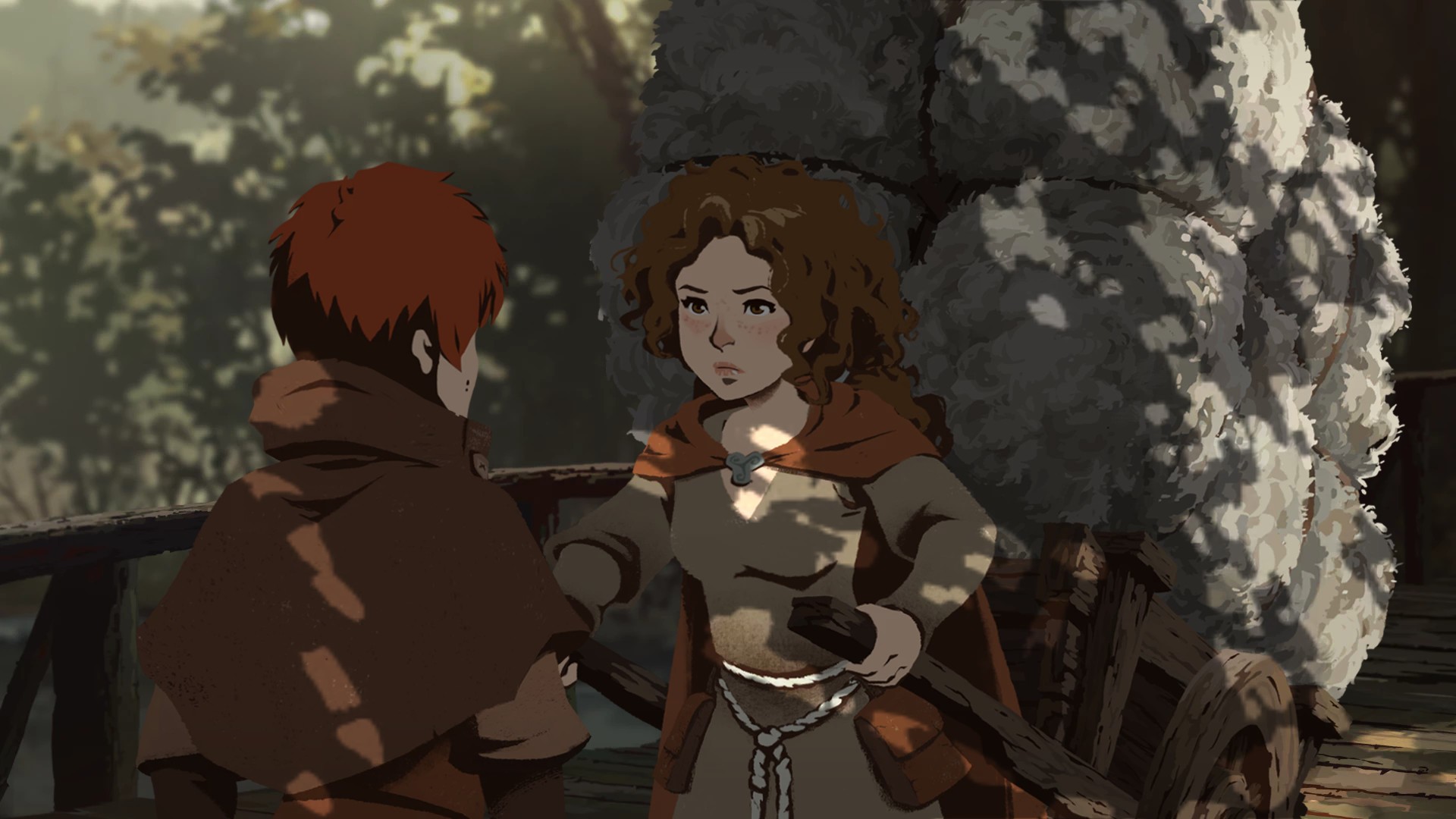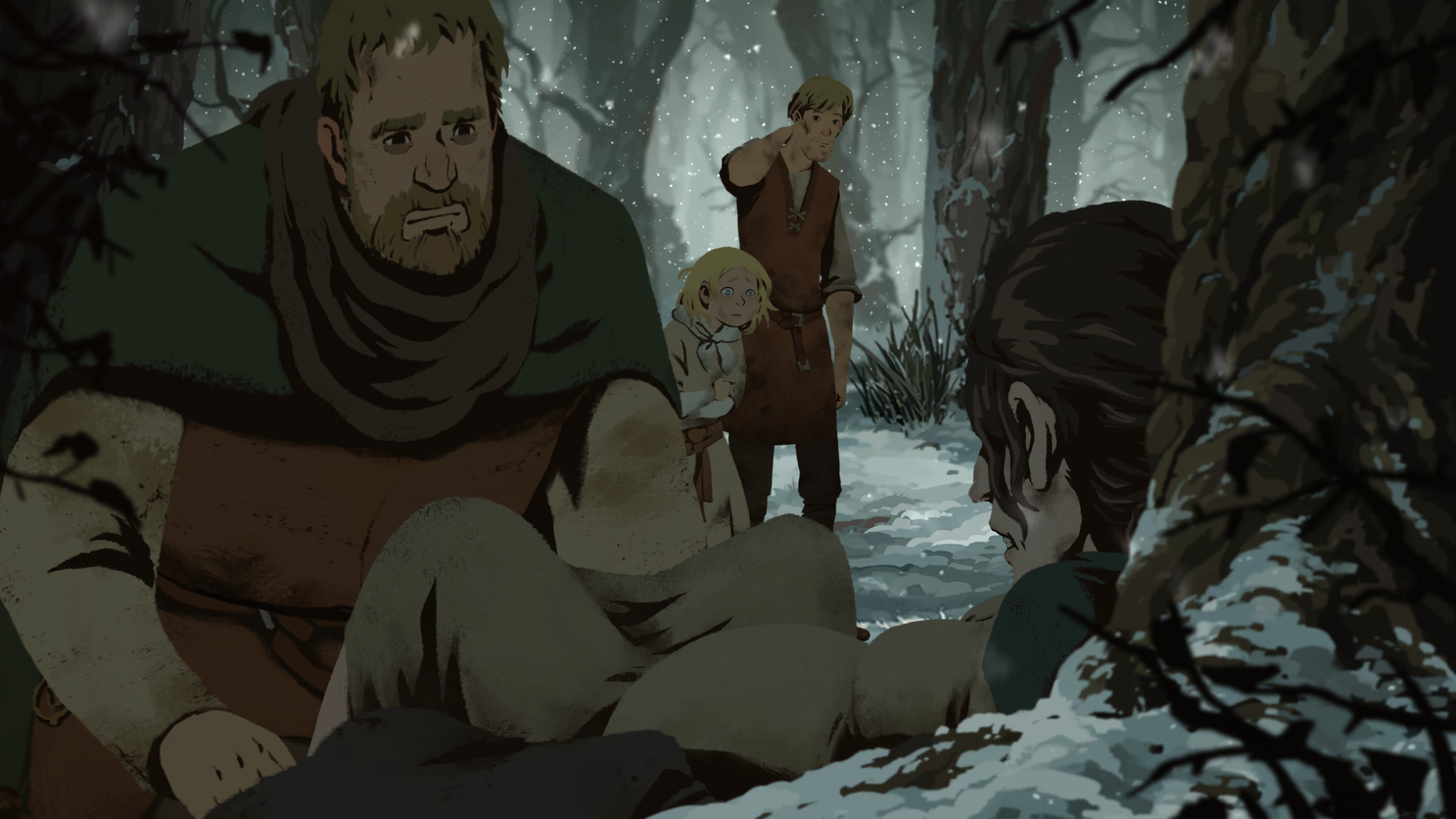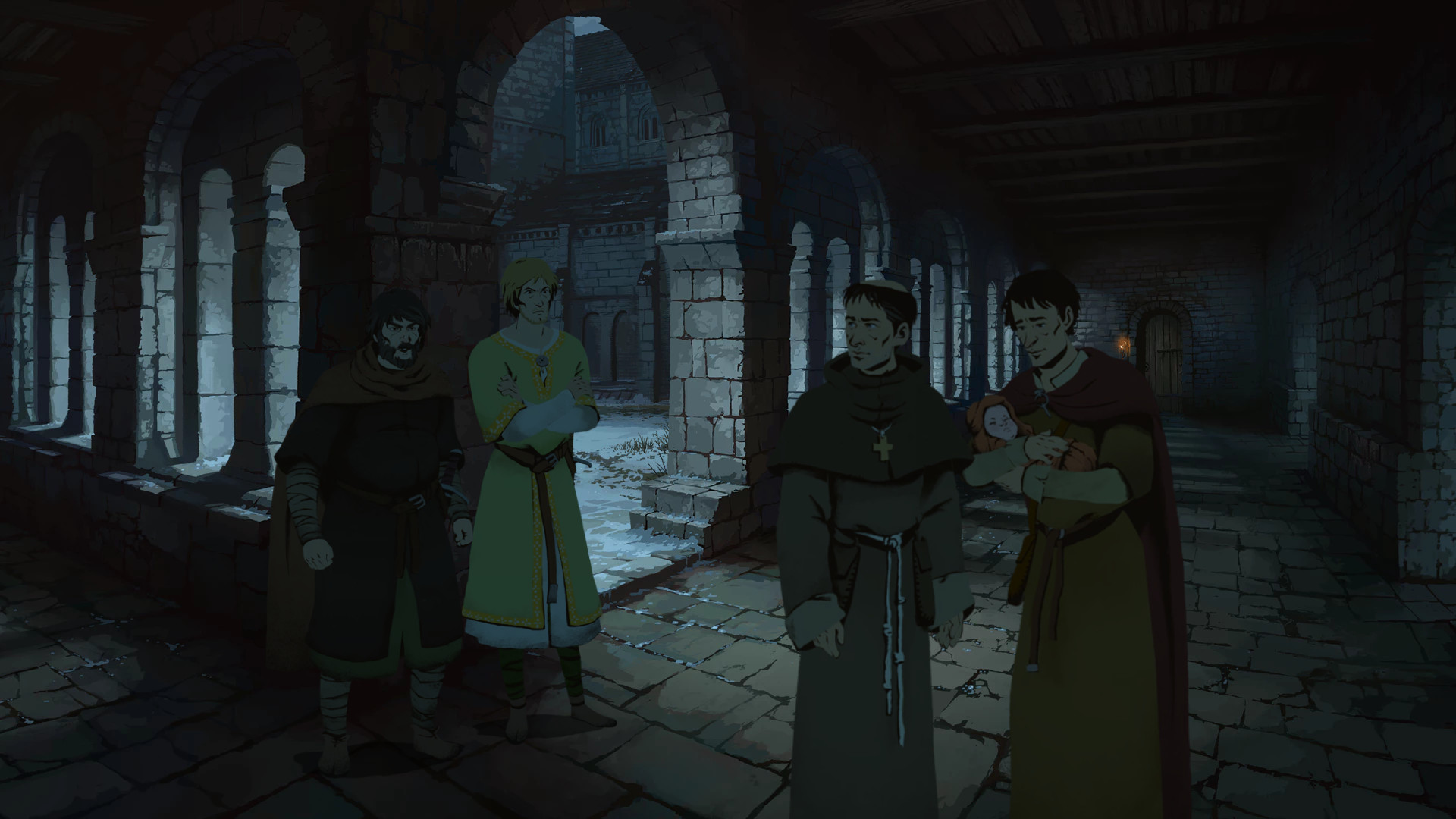Platforms:
Xbox One, PS4, PC
Released:
August 16, 2017
Publisher:
Daedalic Entertainment
Developer:
Daedalic Entertainment
The Pillars of the Earth may just be one of the trickiest narratives to make into a video game that I’ve come across. Based on Ken Follett’s 1000-page novel of the same name, the video game is a historical fiction that’s set in the 12th century town of Kingsbridge, England. It follows the plight of several characters circling around the main story of building an important cathedral. You might think this doesn’t sound like something that translates well into this medium, and you may be right – this is more of a 2D interactive novel than it is a traditional video game, but that doesn’t necessarily make it any less enthralling.
The Pillars of the Earth takes the Telltale Games approach of being broken up into three episodes (books, in this case), each with several chapters. Much like other story based episodic titles, this first one lays out a lot of the groundwork for what’s to come, which does make the earlier chapters feel broad and disconnected at first, but by the end of the book I completely understood what the stakes were and the ideas for the future became tantalizing, which is indicative of a well-crafted story.
The narrative is split into two main groups of characters; the first, by far the more familiar of the two, is Tom Builder and his family. He needs to find work to support his wife and children, which is difficult to come by in this day and age. They meet a mother and son duo along the way and band together, trying to navigate the locals and their own relationships.
The second is Phillip, a monk and a man of morals, who cares very much for the aforementioned cathedral and the inner-workings of the Priory. Given he is a man of religion (and even includes an option in all of his interactions to recite a line from the Holy Book), I found some of his dialogue a bit less relatable, but appreciated the way he cared for his fellow man and stood up for himself and his beliefs.
Relatable or not, the writing is top notch; engaging, interesting and never too complicated, with very solid voice acting to boot. You quickly understand the motivations of each character as you move throughout each location, talking to others, solving light puzzles and exploring the various elements of your environment. There isn’t much you’ll need to actually figure out, mind you. Scenes progress when you trigger the final relevant part of the dialogue or interact with the necessary object.
” Backgrounds are hand-painted, showing incredible detail and a stunning art style that often had me distracted…”
The flaw here is that it’s not always clear what exactly you’re meant to do or who you’re meant to talk to in order to move on. Objectives are often broad, like “find a way to help Tom” for example, leaving a lot of it up to interpretation, clicking on things until it activates the next cut-scene. Longer journeys are mercifully summarized with some story beats and basic choices, cutting down the amount of time spent wandering. Loading screens are a little bit too frequent between areas though, and are just long enough to break the flow, especially when you’re moving back and forth between areas trying to figure out what’s next.
Still, it’s an easy world to get lost walking around in when it’s so damn pretty. Backgrounds are hand-painted and it shows, with incredible detail and a stunning art style that often had me distracted from what I was doing, in awe of the quality. The subtle animations and little details make character moments even more breathtaking, really creating a universe that is beautiful and memorable. Indeed, a story about building such an important piece of architecture needs to represent that with solid visuals, and it’s an element that truly heightens the experience.
Positive:
- Very well written and interesting story
- Beautiful art style with hand-painted backgrounds
- Solid voice acting
Negative:
- Unclear objectives leave you lost at times
- A little slow at first
- A niche story in a niche genre
While it isn’t the perfect production, there’s enough to enjoy about The Pillars of the Earth that makes it worth a look for those interested in a more complex narrative. There isn’t much traditional video game here and the point-and-click style is suited to a very specific audience, but the art direction and overall quality of the audio visual presentation kept me captivated throughout and left me keen to see what happens in the upcoming books. It could very well captivate you too.












